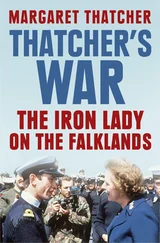Another potential worry for the West is posed by the former Soviet Union’s chemical and biological weapons capability. Such weapons are notoriously difficult to detect by ordinary verification techniques. They can be easily hidden, as we know from Saddam Hussein’s activities in Iraq. They can also be developed alongside or under cover of ordinary commercial, civilian processes. Three Russian officials have been reported as saying that Russia has twenty-four poison gas factories, six of which it plans to destroy and eighteen of which it has either converted or will convert to non-military uses. *Unfortunately for us, the Soviet Union’s biological weapons programme was very closely integrated into ostensibly civil programmes of research. There are worries about how far the necessary disentanglement has gone. Above all, however, it is the possibility of such weapons developed covertly in a Russian laboratory falling into the hands of rogue states or terrorists that is the main worry.
In the end, it is probably upon the massed if uneven ranks of the Russian army that any credible projection of Russian power depends. At present Russia’s armed forces are demoralised and their resources depleted. But it would not be wise to assume that this will always be so. The Russians are traditionally a martial nation. While it is most unlikely that Russia will ever again be a global superpower, it will remain a great power – too big to rest content within its own borders, too weak to impose itself far beyond them. All of which makes for troubling instability.
But the West has to cope. How?
We must never forget that Russia has a huge arsenal of weapons of mass destruction. So some of the most important Western aid programmes are those, like the Nunn—Lugar programme aimed at ensuring proper oversight of Russia’s nuclear weapons, which satisfy our own security needs. Indeed, in all our dealings with Russia, the right approach is to put our security interests always and everywhere first
We must try to persuade Russia that its willingness to sell military technology to rogue states may well rebound against Russians – both for reasons of basic geography and in view of Russia’s problems in its relations with much of the Muslim world
Finally, we dare not take Russia for granted: the seeds of danger are often planted in the soil of disorder, as the world has learned to its cost before.
NATIONALITY PROBLEMS AND THE ‘NEAR ABROAD’
Russia is a huge country that covers eleven time zones. Its border – thirteen thousand miles of it – is the longest in the world, running from Europe to Eastern Asia. This gives Russia a unique opportunity to interfere in other countries’ affairs – particularly because so many of its neighbours were for so long subject to Moscow’s domination.
The fact that Russia’s nation-building and its territorial expansion were in tsarist times so closely interlinked means that Russia has traditionally regarded its frontiers as fluid not fixed. The Cold War stasis lent an appearance of permanence to the Soviet Union’s external perimeter. But with the disintegration of the USSR into Russia and fourteen other independent states that situation ended.
Russia itself felt vulnerable, and this vulnerability explains some – though not all – of the subsequent aggressive rhetoric and manoeuvring. Some twenty-five million ethnic Russians remained living outside the frontiers of the new Russian Federation after the winding up of the Soviet Union. For Russians this diaspora’s existence is both a reason and an excuse to claim the potential right to intervene in other former Soviet republics. On the other hand, the population of the Russian Federation is far from homogeneous: almost 20 per cent of the Federation’s inhabitants are non-Russian. The loyalties and aspirations of these non-Russian nationalities are among Russia’s least soluble problems.
In facing up to such problems, today’s Russian Federation and its neighbours find themselves once more living in the sinister shadow of the old Soviet Union. Stalin’s policy towards the peoples of the USSR was a mixture of calculation and spite. Altogether he uprooted some two million non-Russians, about a third of whom died directly or indirectly as a result, and deported them to Central Asia and Siberia. There was also a planned movement of Russians in the other direction, out of the Russian heartlands, to take up industrial and other jobs in far-flung but important parts of the Soviet Union. These Russian minorities enjoyed a (relatively) privileged existence. Indeed, a policy of promoting Russian interests against those of other nationalities, while trying to avoid any upsurge of ‘bourgeois’ Russian nationalism, was an important part of Moscow’s policy towards the Soviet Empire.
Of course, it failed, and long before the end anyone outside the Kremlin knew it. Surely one of the most memorably stupid pronouncements of any Soviet leader was Leonid Brezhnev’s of 1972 on the fiftieth anniversary of the formation of the USSR: ‘The national question, as it came down to us from the past,’ affirmed Brezhnev, ‘has been settled completely, finally, and for good.’ *Within twenty years nationalism would have helped abolish the Soviet Union ‘completely, finally, and for good’. It remains to be seen whether it will do the same for the Russian Federation.
Against such a background, it is not surprising that ethnic and national suspicions are easily generated. In the years after the end of the Soviet Union a series of crises erupted in the territories of the Russian Federation and its neighbours. The common factors were threefold: Russia’s concern for the Russian minorities in what it called, in a phrase with alarming overtones, the ‘Near Abroad’; Russia’s attempts to use the Commonwealth of Independent States (CIS) as a means of re-integrating the former Soviet republics into a Russian-led confederation; and Russia’s struggle to control its own nationalities and their subordinate republics and regions.
Each region has had its own distinctive features. In some areas stability has returned. In others the outlook is uncertain. And in some of the latter the implications for the West are important.
Western countries have naturally been most concerned with events on Europe’s – and now NATO’s – eastern flank. The fate of the Baltic states was immediately bound up with that of the Soviet Union. One of the most reassuring acts of the new regime of Boris Yeltsin was his statesmanlike acceptance that Estonia, Latvia and Lithuania – which had only been snatched by the Soviet Union by force and fraud under the Molotov—Ribbentrop Pact in 1940 – had the right to be independent sovereign states. The difficulties which subsequently arose about the Russian minorities – particularly in Estonia and Latvia where they represented about 30 per cent of the populations – were a direct result of the previous Soviet policy of swamping the local population with Russians. Naturally, the Estonians and Latvians were determined to restore control of their countries and their culture, which left Russians disadvantaged. Tensions are real and could still become extremely dangerous.
Left to themselves, the Baltic states will increasingly gravitate away from Moscow and towards their Scandinavian neighbours. These highly advanced, extremely talented and profoundly European peoples see themselves as part of the West and want closer integration with it. Russia has no right to stand in their way. Post-imperial hangovers affect all former great powers and are also a headache for their neighbours. It is perfectly understandable that Russia is concerned to secure decent treatment for its Russian minorities in the Baltic states. But it cannot expect to determine their potential orientation.
Читать дальше












